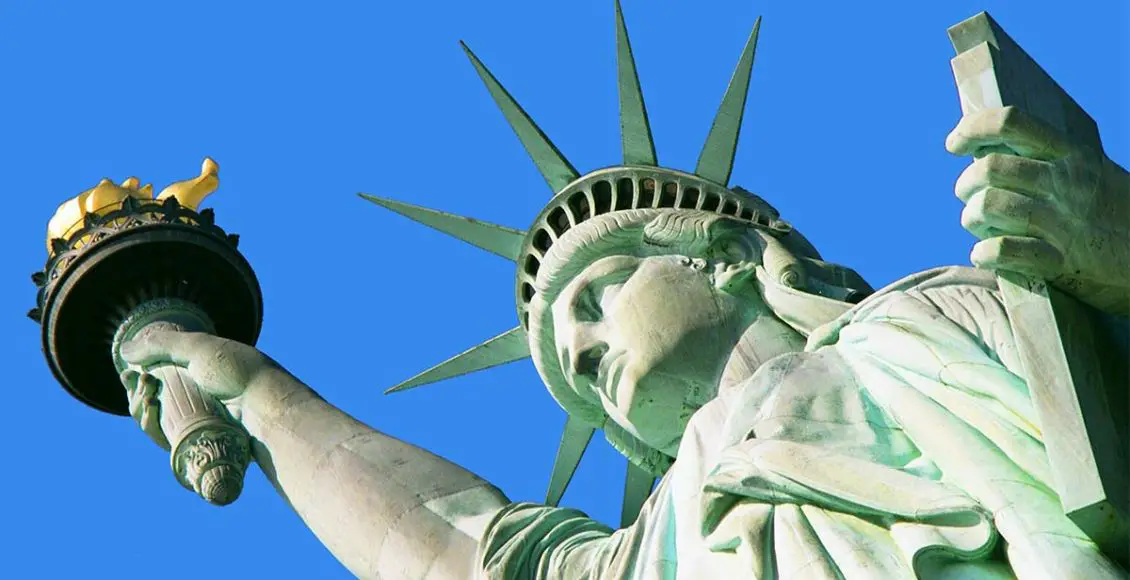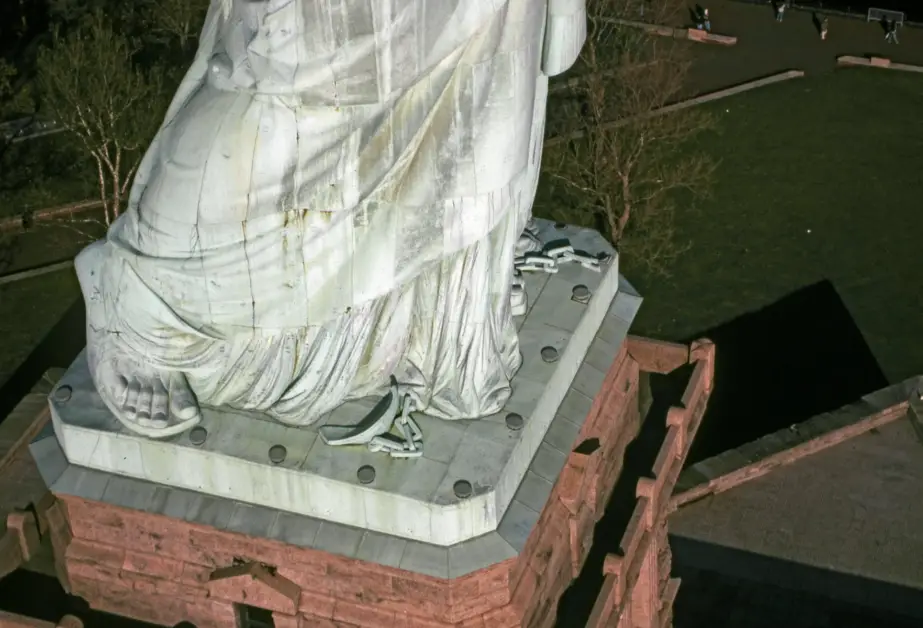This forgotten feature of the Statue of Liberty reminds us how ignorant we could be to our history

When you hear “The Statue of Liberty”, perhaps the image of its seven-spike crown, lighted torch, and long robe instantly pops in your head.
The monument is undoubtedly one of the most recognizable landmarks in the world.
However, not every American is aware of one of the most significant details of the Statue of Liberty.
This important feature resembles one of the crucial reasons why Lady Liberty was gifted to the United States in the first place. It’s broken shackles and chains laying right at the statue’s feet, symbolizing the abolition of slavery.
The Statue of Liberty we now associate with immigration was a gift from France to commemorate the emancipation of American slaves. Before you lift your eyes to her torch of enlightenment, first pass them over the broken shackle and chains at her feet. pic.twitter.com/wZae9g8lF2
— craigball (@craigball) July 4, 2020
As Upworthy notes, many people believe the outstanding landmark located at the New York harbor is a symbol of the act of welcoming immigrants on American land. Some even mistakenly assume that’s the only reason the statue was built.
One explanation for this misunderstanding could be the meaning behind the opening words of Emma Lazarus’s poem engraved on a plaque at the Statue of Liberty. The poem reads:
“Give me your tired, your poor,
Your huddled masses yearning to breathe free,
The wretched refuse of your teeming shore.
Send these, the homeless, tempest-tost to me,
I lift my lamp beside the golden door!”
People associate these words with images of immigrants arriving on the shores of the Land of Freedom, searching for a better life. They believe this lays in the foundation of The American Dream. What these people might not know is that the plaque was added to the Statue of Liberty in 1903, about two decades after it was unveiled.
So what was the real reason for the creation of this remarkable monument?
It turns out Lady Liberty was not built to celebrate immigration, but emancipation and freedom.
In an interview with the Washington Post, the historian Edward Berenson notes that the concept of the well-known landmark was established back in June 1865. Then, Édouard de Laboulaye, a French anti-slavery activist and an admirer of the United States’ Constitution, organized a meeting of other French abolitionists only a few months after the end of the American Civil War. At the meeting, the participants discussed “the idea of creating some kind of commemorative gift” that would symbolize the significance of liberation.
The anti-slavery activist enlisted the sculptor Frédéric-Auguste Bartholdi to come up with ideas for the exact design of the statue. In fact, one of his first models was holding the broken shackles and chains in her left hand. The final idea had Lady Liberty’s left hand wrapped around a tablet inscribed with the date JULY IV MDCCLXXVI (July 4, 1776), whilst the broken chains were moved to her feet.

Recently, The New Yorker posted an article by the writer Robin Wright who looks through the idea of what the activist Laboulaye would think of the U.S. today.
“One has to wonder what Laboulaye would think of America today, amid one of the country’s gravest periods of racial turmoil since the Civil War.”
Presently, with the global outrage sparked in the Black Lives Matter protests, people are highlighting the real meaning behind one of the most recognizable landmarks in the world.
The Statue of Liberty was created to celebrate freed slaves, not immigrants, new museum recounts – The Washington Post https://t.co/LE6mSp3i7u
— Brandon David Wilson (@Geniusbastard) July 4, 2020
According to the National Park Service, in the year 1886, the monument was a symbol of “the Union’s victory in the American Civil War and the abolition of slavery”. At first, the statue was called “Liberty Enlightening the World”.
The broken shackle and chains at Lady Liberty’s right foot represent a symbolic anti-slavery message, but it “was not yet a reality for African Americans” at the time, NPS marks. Still, the broken chains remain a powerful emblem for the abolition of slavery.


